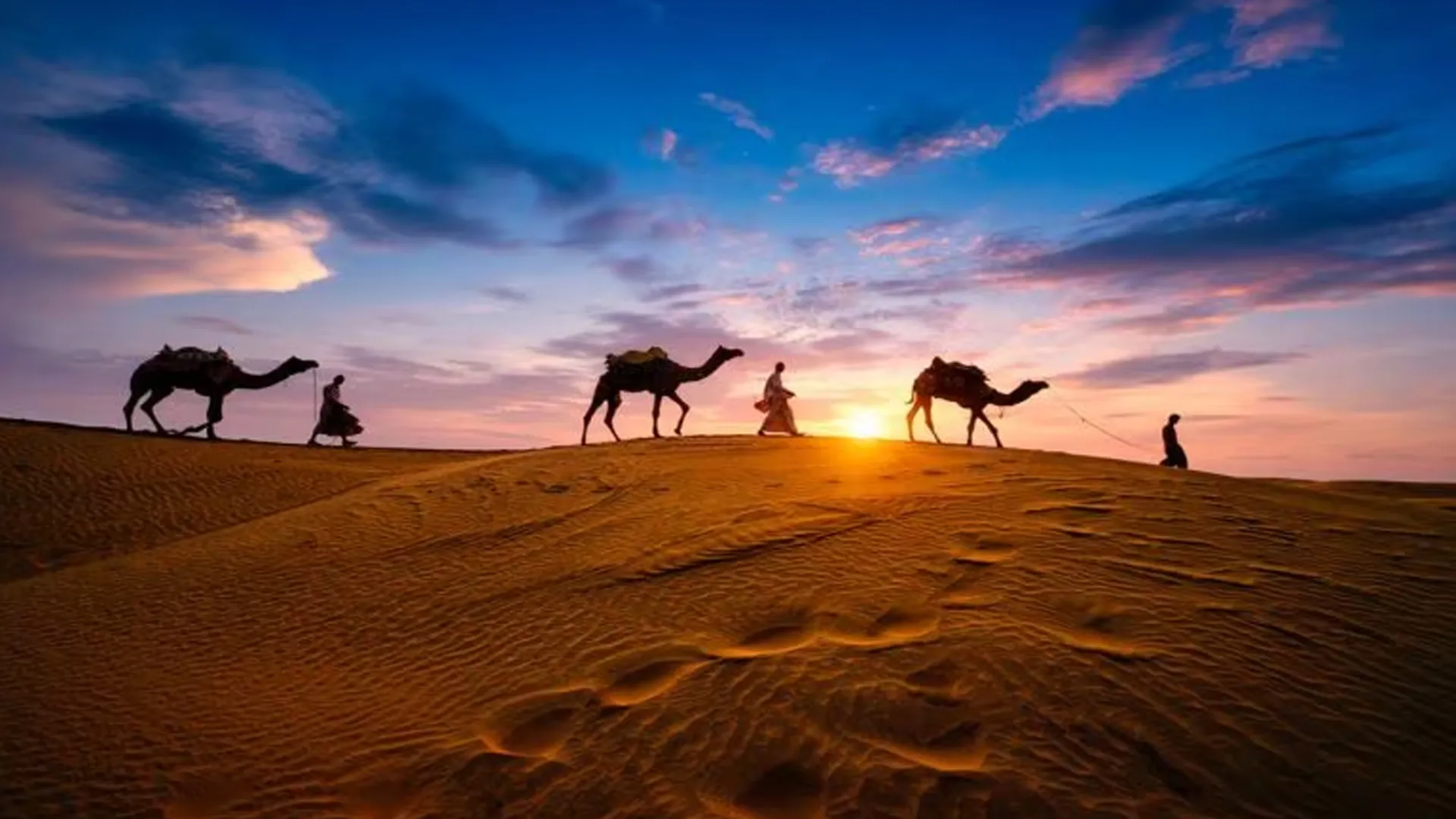India’s Thar Desert, once considered one of the harshest landscapes on Earth, is undergoing a dramatic transformation. A new international study has found that between 2000 and 2023, the desert saw a 38% rise in vegetation and a 64% jump in rainfall. No other major desert in the world has experienced such simultaneous increases in rain, greenery, and population during the same period.
Rain, Crops, and Cities Reshape the Thar
Indian and American researchers employed satellite and field observations to monitor the changes in the Thar Desert. Their research established that the area has not only become greener but has also experienced the highest expansion in croplands, urban areas, and population among the world’s 14 largest deserts.
“What we’re seeing in the Thar is a classic case study of the human capacity to adapt to extreme harsh environments,” said Dr. Vimal Mishra, who led the study. He is the head of the Water and Climate Lab at the Indian Institute of Technology, Gandhinagar.
The research pointed out that rain started growing steadily over the Thar desert, particularly in the northwest, from 2000 onward. On average, the area had 4.4 mm more rain each year. “The annual rainfall increased steadily in most parts of the region,” Mishra stated. “This rise in precipitation is unusual and important.”
These results were replicated with data from the Climate Hazards Group InfraRed Precipitation with Station (CHIRPS) system. Four of the 14 global deserts, Thar, Arabian, Negev, and Eastern Gobi, experienced increased rainfall. The African Namib Desert became drier, with the others mostly unaffected.
Vegetation Spreads with Groundwater and Monsoon Rain
The greening of Thar is directly linked to rising rainfall and augmented groundwater utilization. The research indicated that between 1980 and 2015, agricultural land in the region increased by 74%, while irrigated land increased by 24%.
“At the annual scale, groundwater accounts for 55 percent of the water used by plants,” Mishra said. “Rainfall supplies the remaining 45 percent.”
Rainfall during the monsoon is the major source of water for crops, but in the dry season, groundwater becomes essential. “In the non-monsoon season, 67 percent of the greening comes from groundwater,” the study observed.
The development of infrastructure has aided this agricultural boom. Irrigation schemes such as the Indira Gandhi Canal, which supplies water from the Beas and Sutlej rivers to Rajasthan, have enabled farming in dry regions. Improved access to electricity has also assisted farmers in pumping groundwater for irrigation.
“These changes show how appropriate policies and investments in infrastructure can help societies thrive even under harsh conditions, with some help from natural processes,” Mishra added.
Groundwater Depletion Looms Over Desert Expansion
However, the research also noted a worrisome side effect: acceleration in groundwater depletion. Measurements of the Central Ground Water Board, as well as satellite observations from NASA’s GRACE mission, indicate declining levels of groundwater, particularly in areas where vegetation cover has increased the most.
“Most wells show a steady drop in water levels,” warned Mishra. “We’re extracting more water than nature can recharge.”
This excess extraction severely threatens the sustainability of the green transformation of the region. Responsible water management, without which the benefits of augmented rainfall and agriculture could turn into a liability.
Urbanization Reshapes the Desert Landscape
Urbanization in the Thar has matched the expansion of agriculture. Between 1985 and 2020, Thar desert towns and cities expanded by 50% to 800%. Between 2000 and 2020, the Thar experienced the most rapid population growth among all large deserts. The Arabian Desert came next.
“This population growth is clear from the expansion of cropland and urban areas,” Mishra added. “The availability of water and cheaper land likely encouraged migration and farming.”
Currently, the Thar boasts the highest population density of any desert in the world. Stretching across nearly 200,000 square kilometers through Rajasthan, Gujarat, Punjab, Haryana, and into south-east Pakistan, the desert today is marked by its uncommon triple surge—in precipitation, vegetation, and human population.
Climate Change Brings Opportunities and Risks
The Climate change might be a driving force behind Thar’s altering weather patterns, but it has mixed implications.
“Climate change can limit water availability in some areas, while in others, it increases rain in bursts,” Mishra explained. “In Thar, large-scale monsoon changes, together with human efforts like irrigation, have shaped the current pattern.”
He also warned that more rainfall is not always a good thing. “Future rainfall may come as extreme events, causing floods,” Mishra said. “And heatwaves may become more frequent.”
Co-author Ramakrishna Nemani at the Bay Area Environmental Research Institute at NASA shared the same concerns. “This region may face higher health risks and less capacity for outdoor work due to rising temperatures,” he said.
A Greener Future Demands Smarter Planning
Scientists forecast that rainfall each year in the Thar would increase by 20% to 50% in future decades, depending on worldwide emissions. Yet they anticipate an increase in hotter days and energy demand for powering irrigation equipment and cooling apparatuses.
“The Thar is unique today, but that doesn’t mean it’s safe from future stress,” said co-author Hiren Solanki.
While the transformation of the desert holds promise, it also has a challenge. The scientists are calling for better management of the water, the land, and the city in the future. “Otherwise, the very forces that drove growth may trigger crisis”
The paper, published in Cell Reports Sustainability, provides an unusual insight into how humans and nature have co-designed one of the world’s most unlikely green areas.
“Greening a desert is not easy,” Mishra concluded. “But keeping it green might be harder.”




















